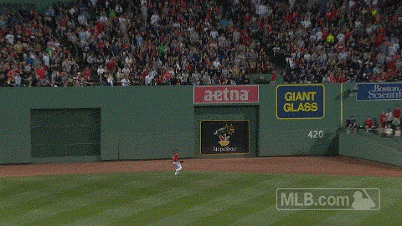Marvelous Mookie Betts was selected by the Boston Red Sox as the 172nd pick of the 2011 draft in part because of the new science of neuroscouting, research that aims to go far beyond traditional evaluations. From Alex Speier of the Boston Globe:
“He wasn’t a typical high school stud,” said Theo Epstein, the former Red Sox general manager and current Cubs president of baseball operations. “He’s an undersized kid. It’s really the athleticism and actions that drew us to him. Danny really believed in him.
“Through further evaluations and some of the proprietary testing we developed over the years, it was really clear that this kid not only had the speed, not only had the athleticism, not only had the arm, not only had the feel for the game, but also was pretty elite in his hand-eye coordination, his reaction time, and the way his mind worked as well.”
What, exactly, does Epstein mean about the workings of Betts’s mind?
“I can’t talk about that stuff,” he laughed, “because then I’d have to kill you.”
That “stuff,” according to several sources familiar with the Sox’ scouting efforts with Betts, was a new effort in 2011 to have prospects take part in neuroscouting tests.
For years, pitch recognition has been a great separator when scouting amateur players. Given that a high schooler might never see a fastball that cracks 90 miles per hour or be challenged by a legitimate major league breaking ball, there is significant guesswork in determining whether apparent bat speed will translate to production against top pitching in the pros.
In an attempt to crack that mystery, the Sox started instructing their area scouts to put potential draftees through a series of computer exercises meant to measure reaction time to pitches. Betts became a heralded part of that pilot program.
“I missed my lunch period because I was doing neuroscouting,” recalled Betts. “[Watkins] just said, ‘Do this, don’t think about the results.’ I did what I could. It was just like, a ball popped up, tap space bar as fast as you could. If the seams were one way, you tapped it. If it was the other way, you weren’t supposed to tap it. I was getting some of them wrong.
“I wasn’t getting frustrated, but I was like, ‘Dang, this is hard.’ ”•

